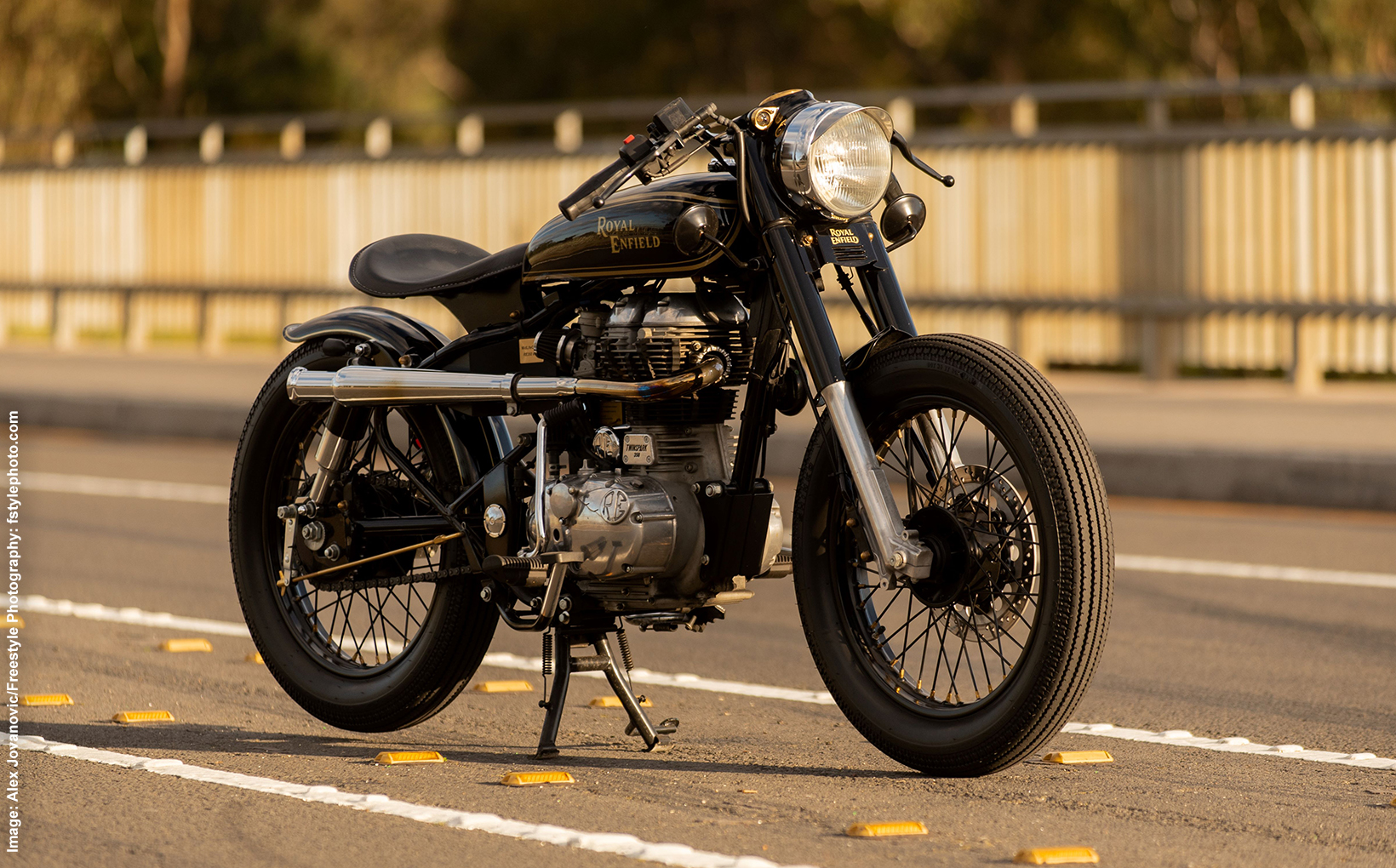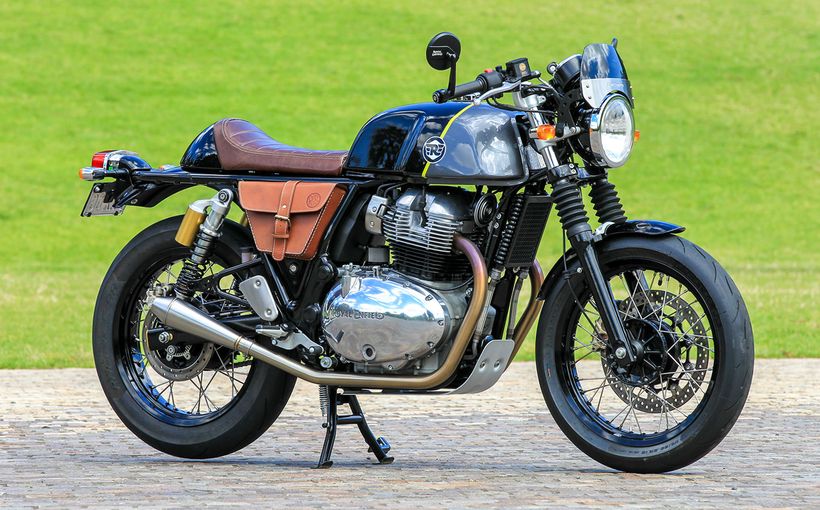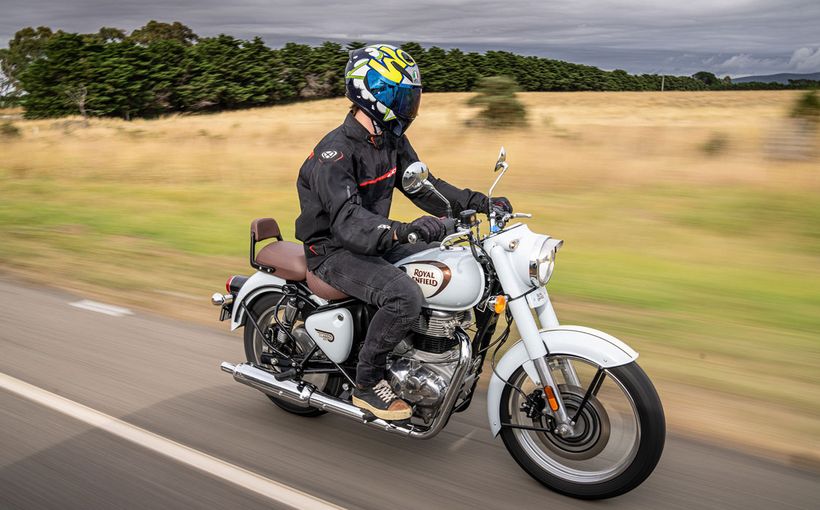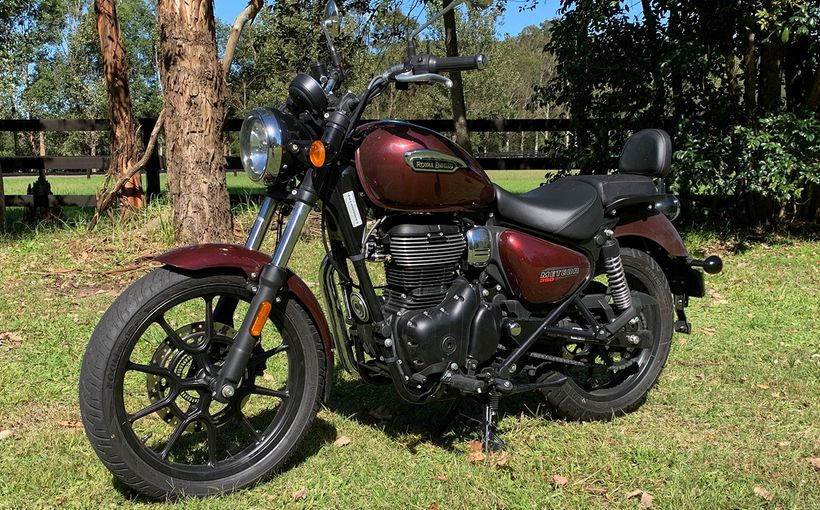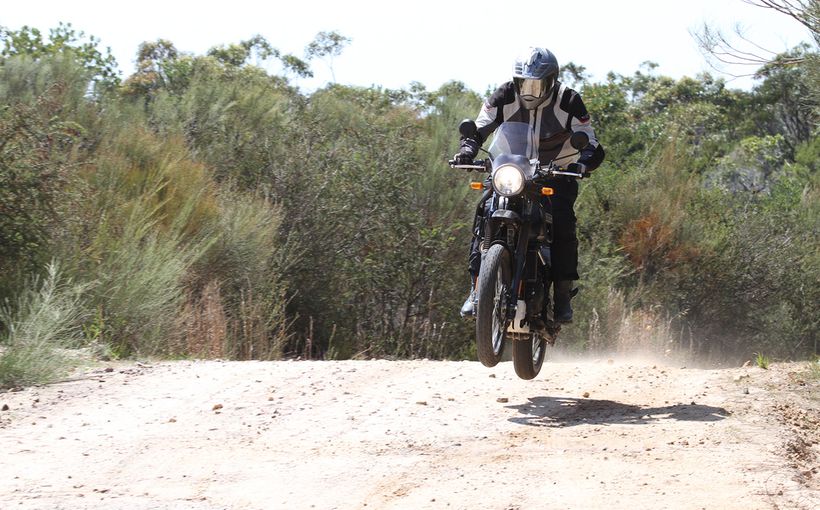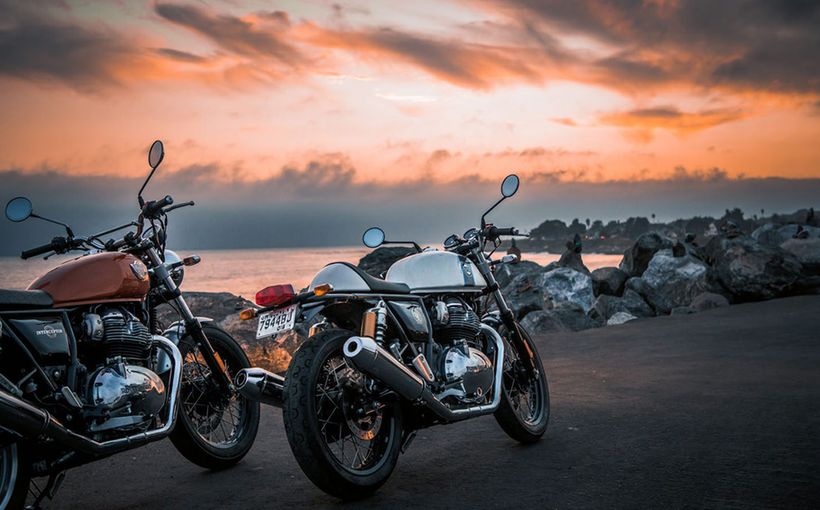John’s 2016 Royal Enfield 350 TT: 'Prince of Brass' has retro-modern class

Buying a classic motorcycle is a dream for many enthusiasts, even though the reality of ownership can fall short of expectations in terms of reliability and maintenance. The solution for some is a new bike that looks like an old one, which is what Shannons Club member John Randall achieved with his remarkable - and unique – 2016 Royal Enfield 350 TT.
“My granddad had Ariel Square Fours and big Nortons; he basically had that whole catalogue (of British bikes) so I always wanted something like an old AJS or Matchless for my first bike,” John says.
“However, if I’m going out for a ride, I also want to get home again! So, I went searching for a new bike with an old-school look and nothing ticked that box, until I saw the Brass Rajah at a bike show and almost threw my wallet at it.”
The intriguingly-named Brass Rajah, which so captured John’s imagination, was a retro-modern concept so-named due to its elegant brass highlights. It was created by Melbourne’s Mid Life Cycles (MLC) as its entry in the inaugural Royal Enfield Custom Bike Build-Off in 2016, backed by the marque’s local distributor.

Image: Alex Jovanovic/Freestyle Photography: fstylephoto.com
Use of the word ‘rajah’ (an Indian prince) in the bike’s name (or Prince of Brass) has considerable relevance to Royal Enfield, because what was originally an old empire British marque is now a large motorcycle manufacturer of classic-themed single and twin-cylinder models based in Chennai (formerly Madras) and owned by India’s Eicher Motors.
The Royal Enfield name can be traced back to 1893 in England, when a precision engineering and burgeoning bicycle manufacturing company in Worcestershire won a contract to supply precision parts to the Royal Small Arms factory in Enfield, Middlesex.
To celebrate this prestigious order, the engineering firm was renamed the Enfield Manufacturing Company Ltd and its first bicycle was called the Enfield. The following year these bicycles were renamed Royal Enfield and in 1901 the company released its first motorcycle of the same name.
Sales grew over decades and after India gained independence from British rule in 1947, Madras Motors was established as the marque’s Indian distributor. This led to a joint venture, with local assembly of imported kits evolving to a majority shareholding and complete manufacture by Madras Motors in the 1960s. This was timely for Royal Enfield’s survival, given that its British operations were in terminal decline and closed in 1970.

Image: en.wheelsage.org
So, back to the Brass Rajah. Built from a then-new 2016 Royal Enfield Classic 350, MLC’s team under Michael Catchpole created the 1930s Art Deco-inspired bobber. Although it didn't win the Build-Off competition (go figure!) it captured the imagination of several MLC customers, including John Randall, who wanted a Brass Rajah he could call his own.
So, MLC committed to limited production of a replica called the 350 TT, given it was inspired by Royal Enfield 350cc racers that competed in the Isle of Man Tourist Trophy events in the 1930s.
As a result, the example you see here is one of only four built from that generation of Classic 350. None of them are identical, so John’s is unique - and you can’t get rarer than that!

Image: Alex Jovanovic/Freestyle Photography: fstylephoto.com
Starting with a showroom-fresh 2016 Classic 350, which John bought himself as a birthday present, the MLC team stuck resolutely to the Brass Rajah’s blueprint. That was to make the bike look longer and lower, in true bobber tradition, but without frame surgery to preserve its OEM integrity.
That process started with stripping the new bike down to its bare-essentials (another bobber signature) which included removal of the toolbox (and the airbox on John’s bike) to perfect its profile and all-important stance.
A crucial factor in achieving those design goals was adding 75mm to its wheelbase, by fitting a longer rear swingarm fabricated by Hallam Racing’s Andrew Hallam.
The Classic 350’s standard coil-over shocks were replaced by 1950s-style ‘jampot’ units and the standard 18-inch rear wheel was replaced with a larger 19-incher from Royal Enfield’s contemporaneous Bullet 500 model to match the front wheel diameter.

Image: Alex Jovanovic/Freestyle Photography: fstylephoto.com
Both are fitted with 4.00 x 19 high-sidewall Shinko tyres (but with grippy modern compounds) under custom mudguards, which together enhance this bike’s old-school patina. The Classic 350’s shrouded front forks also look right at home here.
Another pivotal design component that visually lengthens and lowers this bike is a circa-1930s replica Norton racing fuel tank. And John sits on a custom solo leather seat on a mount created by Fabwell’s Paul Moneta, which eliminates the seat’s original springs and allows it to visually ‘float’ above the frame.
The finishing touches, befitting the name of its famous progenitor, included lots of highly polished brass detailing, right down to the tiny nipples on each of the spokes where they join the powder-coated 19-inch rims. Plus the stunning black paint and gold retro-graphics by the masterful Glen Stevens.
A stand-out unique feature of John’s example is the high-mounted scrambler-style megaphone exhaust system, which differs from the Brass Rajah’s low-slung bobber style and is reminiscent of the high-riding pipes on 1930s Royal Enfield models like the legendary Bullet.

Image: Alex Jovanovic/Freestyle Photography: fstylephoto.com
John’s also uses an exposed pod-type air filter, which with the high-pipe results in an intriguing mix of retro bobber and scrambler themes. He also specified his own brass detailing in key places, along with a shorter front mudguard and side-mounted taillight.
To minimise vibration inherent in the 350 single, John revised the final-drive gearing for the five-speed gearbox to lower rpm at cruising speeds. He also fitted a ‘Carberry Plate’ (created by Aussie Royal Enfield guru Ian Carberry) in the crankcase to optimise main-bearing support.
The engine in John’s 350 TT is largely standard, to minimise reliability issues and maximise fun. And on that score, the 346cc air-cooled four-stroke single with two overhead valves, 29mm carburettor and a humble 20hp gets full marks.
This was confirmed by no less than revered UK motorcycle racer and reviewer, Sir Alan Cathcart, who road-tested the original Brass Rajah for Australian Motorcycle News in 2017:

Image: Alex Jovanovic/Freestyle Photography: fstylephoto.com
“It was a pleasure to be propelled around the streets of Melbourne by the Rajah’s 350cc engine and even at higher speed/revs it didn’t get stressed carving corners following the sweeps of the river in the Yarra Bend Park, or returning to Mid Life Cycles via the freeway, where it felt pretty long-legged,” Cathcart wrote.
“This is a great-looking but completely practical custom motorcycle – the kind that Roland Sands, the LA-based fusion chef of custom cool, would have been proud to have concocted himself. It’s a user as well as a looker.”
John Randall no doubt agrees with Cathcart’s assessment. However, given that Melbourne-based John is a big fella (188cm tall and around 110kg - “a bit of a rugby build” he quips) he's matched the 350 TT’s suspension settings to his weight to ensure no bottoming-out over bumps. As a result, the ride is on the firm side, but it’s a compromise he happily accepts.

Image: Alex Jovanovic/Freestyle Photography: fstylephoto.com
“I wouldn’t ride it to Sydney. It’s not a BMW GS or something like that, more a fun bike for around town, but I do go up through the Dandenong Ranges quite often which is always a great ride,” he says.
“When cruising along at 60-80km/h it’s just perfect, which is fine by me because I’m acutely aware of keeping within my limits on two wheels. I try to ride it every weekend if it’s not too hot or raining. It’s a fair-weather ride, for sure, because the whole point of this bike is to have fun.”
And according to John, that fun extends to its old-school authenticity. His 350 TT is so persuasive that many are convinced it’s a pre-war classic at first sight. It’s also been the subject of numerous amusing reactions and comments.

Image: Alex Jovanovic/Freestyle Photography: fstylephoto.com
“I attended a big display day last year and when I rode in I thought they were going to direct me to the normal spectator parking, but they waved me right on through to the Historic section where I parked next to a Model T Ford,” John says with a chuckle.
“I also remember a group of old blokes walking by. One stopped and claimed it was an AJS and then started to give his friends a full history lesson on AJS motorcycles!”
Clearly, given John Randall’s primary goal with his first bike was to have fun, then it’s already delivered in spades. And given its uniqueness, it’s sure to be a keeper too.
View John's Shannons Club Garage and Connect with JohnRandall

